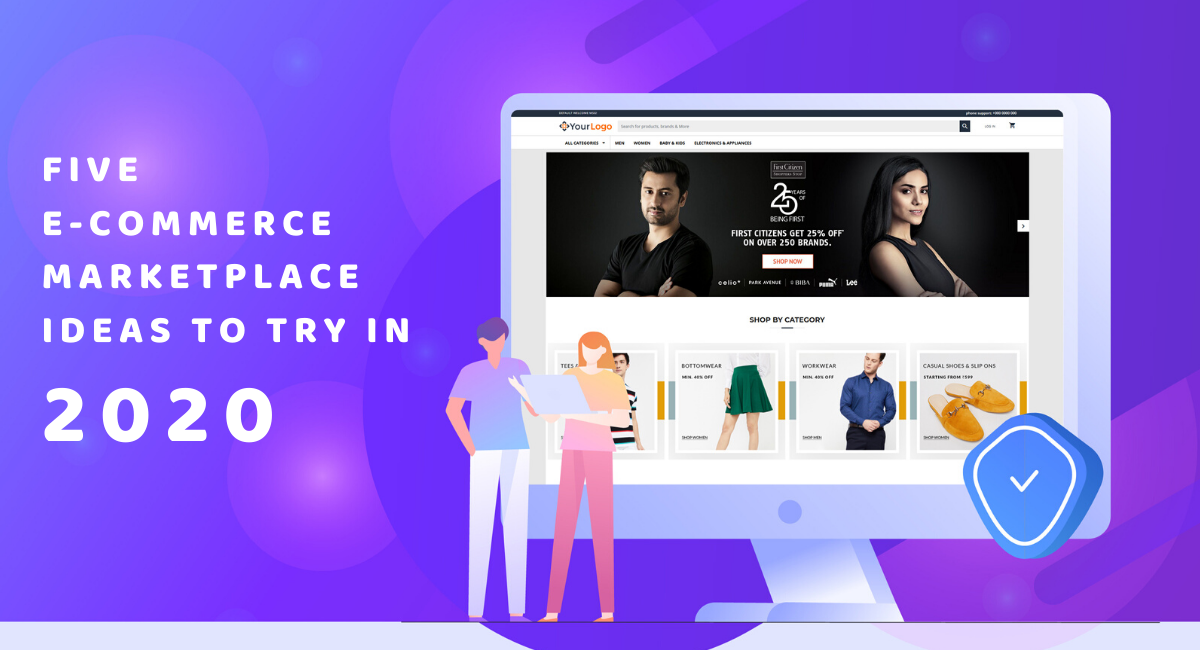E-commerce always surprises us. There’s something interesting popping up every now and then that catches our attention and hook us towards it. The spirit of such innovative ideas is what keeps the eCommerce business going which we are continuing to know more about it.
Category: marketplace

Multi-Vendor Marketplace – Benefits and Challenges
When you think of online marketplaces, Amazon, Etsy, and Alibaba are probably the first few names that come to mind. Interestingly, an increasing number of eCommerce hopefuls today are opting for the multi-vendor eCommerce marketplace model.
In essence, the said model is an online umbrella platform where each seller can run their shop autonomously on a single platform, while the platform owner takes care of different aspects of an eCommerce store such as order processing, tracking, and payments.
According to research, marketplaces will account for almost thrice as compared to single eCommerce stores by 2021.
The time is not far, and we can already see that the market is an efficient and popular business model for start-ups looking to cater to a global market.
Adding to that, let us take a look at the benefits of multi-vendor eCommerce marketplaces:
- More products and hence more customers
A multi-vendor eCommerce marketplace typically plays host to a wide variety of sellers who sell different types of items. Customers thus have the convenience of shopping for different kinds of goods under one roof.
This attracts a more significant number of customers than if the marketplace were to sell only one type of good. At the same time, vendors are attracted to the multi-vendor eCommerce marketplace model as it provides them with a convenient online setup and a vast pool of customers to sell to.
For both these reasons, a marketplace model is a lucrative option for an eCommerce business to consider.
- No need to maintain inventory
An eCommerce start-up will likely not be able to afford the costs of maintaining a full warehouse of sellable goods. In a multi-vendor marketplace, however, each vendor is responsible for keeping his or her inventory.
That releases the start-up of considerable financial burden, which is significant in the initial stages, and they can focus instead on website improvements and on scaling up their business with focus and efficiency.
- Lower operation costs
When opening a multi-vendor marketplace, there is no need to invest time and money in designing products, maintaining inventories, or managing logistics. All of those are the responsibility of the sellers operating in the marketplace.
The marketplace can thus focus on promoting their business through social media, scaling its operations to reach global customers and website maintenance. This also means that they can work with a smaller team, which further brings down costs.
When it comes to creating virtual storefronts, the marketplace can do so easily with the help of any leading multi-vendor eCommerce marketplace software provider such as MobiCommerce. The company can help in launching a feature-rich, responsive online marketplace promptly.
- Easier to make money
Because of the wide variety of products and a large number of customers, marketplaces can make considerable sales far sooner than if they were to specialize in just one type of good. They earn a commission on each sale made by each vendor, the percentage for which they are free to decide.
The higher the number of sellers, the higher the volume of sales, and thus the higher the commission income for the marketplace.
However, a multi-vendor eCommerce platform comes with its own set of operational challenges, including:
- Price competition
While a large number of sellers ensure a wide variety of options for the buyers, it also leads to substantial price competition as there are several substitutes for each product. This could lead to intense price competition among vendors to grab larger market shares. As a result, the commission that the marketplace earns on each sale goes down.
- Quality maintenance
Different sellers offer products of varying quality levels, and the sheer number of sellers makes it impossible for the marketplace owner to do a quality check on every product. If there are too many vendors selling shoddy products, it could bring down the marketplace’s reputation in the eyes of the customers.
However, the problem can be addressed to some extent by having in place a customer rating system for each seller and removing the sellers whose ratings dip below a threshold level. Amazon has that option, wherein you can check the rating of the product and its seller right on the product page.
- Delivery management
While the vendors are responsible for the quality of their goods, the marketplace still needs to take care of deliveries. This requires efficient logistics in place to transport items safely and deliver them on time. Mainly, if the marketplace caters to multiple states or countries, managing these logistics can be a time-consuming and a rather expensive task.
The problem can be eliminated with a dynamic e storefront that allows the marketplace owner to track all deliveries from all sellers under a single roof.
- Customer management
Customer complaints are typically shared with the marketplace and not with the individual vendor. The marketplace is thus responsible for looking into the issues and following up on any refunds, returns, or replacements that might be needed.
That is a time-consuming process and requires a separate customer service team. Moreover, since complaints could come in 24×7, the marketplace needs to devote even more resources towards addressing all complaints promptly. However, this too can be resolved with the help of a marketplace solution provider.
Recommended Blog The B2B eCommerce Marketplace Technology
Wrapping up
A multi-vendor eCommerce platform requires superior technology and considerable investment to start the business on the right note. That is also one reason why many entrepreneurs shy away from dipping into the marketplace pond.
Thankfully, MobiCommerce is a multi-vendor eCommerce marketplace solution that can help them do away with such limitations and can figure out excellent growth opportunities without making a lot of mistakes.
So, what are you waiting for? Jump onto the marketplace at the earliest and thrive!
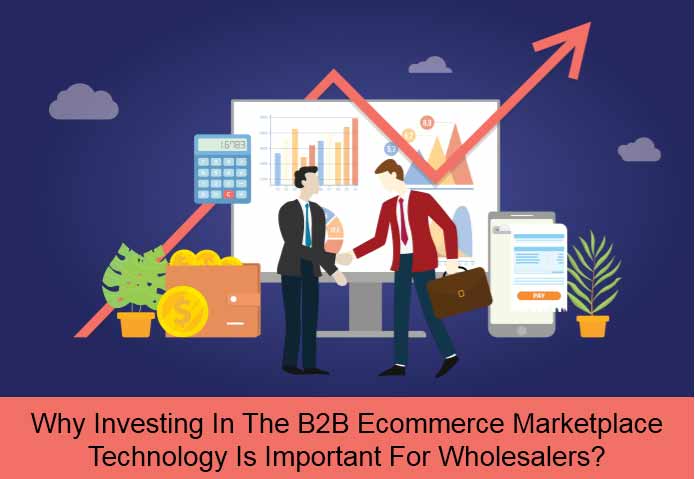
Why Investing In The B2B Ecommerce Marketplace Technology Is Important For Manufacturers, Distributors And Wholesalers
Retailers have always been quick to embrace eCommerce. From selling clothing and sporting equipment to garden goods and groceries online, they seemed to have hit the jackpot with both B2B and B2C online mediums.
However, the same can’t be said about B2B manufacturers, distributors, and wholesalers. For starters – the vast majority of them don’t enjoy the high-profit margins or the revenue growth that a mature eCommerce business generates.
The B2B manufacturers, distributors, and wholesalers lag because they are not sure how if their customers want to buy online. Not so surprisingly, manual transactions account for 49.3% of all sales by manufacturers and distributors.
A survey conducted by B2BecNew states 50% of them don’t even have an eCommerce website, let alone any other option of selling their business online. With the B2B marketplaces and eCommerce websites collectively a $1tn market, things are bound to take a turn for the good.
The B2B manufacturers, distributors, and wholesalers now show an urgency to get into the game. That means, out of those who don’t have an online presence, 75% plan to launch a website within two years while almost 59% of them plan to do it within a year.
However, having an eCommerce website is not just enough. You must also invest in a proper B2B eCommerce marketplace technology. Here are four reasons why:
Enjoy higher profit margins
Consumers tend to spend more on an online transaction due to product recommendations, pop-ups instigating impulsive buying, and easy to navigate websites. The more eCommerce sites are more comfortable to navigate and browse through; the more transactions will they attract.
Whether you are a manufacturer, distributor, or a wholesaler, a user-friendly website will grant you profit margins that are several points higher if you have an eCommerce store. One of the biggest reasons for the same is an automated order entry that reduces waste productivity and customer dissatisfaction by upping a typical order value from $150 to $50.
And that can happen only when you invest in a robust marketplace technology, an online multi-vendor marketplace software on Magento, to be precise. But before purchasing one, make sure tally the costs and look for vital features such as payment gateways, integration with ERP, admin controls, customization properties, and more. Sign up for several demos before selecting one.
Too often, B2B companies don’t take the time to research the technology and dive straight into the world of eCommerce. Don’t make that mistake.
Leverage supply chain management
The emergence of eCommerce has been disruptive, not just for consumers but also for retailers, manufacturers, and distributors. There was a time when only one distributor could only access the supply chain.
However, by joining hands with multiple vendors and distributors, eCommerce retailers have managed to offer not only various products but also faster deliveries. Moreover, the consumers of today are used to having the order status on their fingertips.
Anything less than that causes immense dissatisfaction to them. As a manufacturer, wholesaler, or distributor, you must strive to give your customers an impeccable customer service. And that includes image optimization, detailed product information, social selling, a dedicated customer care team, and more.
Join hands with multiple verticals across the industry for that. Leverage supply chain management. But to manage it all, get the right B2B multi-vendor marketplace eCommerce software for the best results.
Upsell and cross-sell your customers
It is true eCommerce brings you closer to potential customers from every part of the world. But when that happens, why leave the golden opportunity to upsell and cross-sell them? B2B distributor sales reps, for instance, are masters at predicting their customers’ needs.
That is how distributors generate maximum leads and convert them to profitable transactions. However, to do that, the reps must be free of taking orders manually, and that’s only possible when the right Magento marketplace software solution is in place.
That way, they can focus on talking to customers about new product offerings and opportunities to grow their relationship with the customers. The eCommerce marketplace technology has brought a shift in the typical sales approach and given birth to a different type of relationship between the customer, retailer, and the distributor – one that should be leveraged properly.
Helps manage data
It’s a fact: manufacturers, distributors, and wholesalers have to invest in data management to be able to grow in the eCommerce space. If you don’t have the right systems in place to maintain and use data, you cannot compete in the digital world, let alone succeed.
For starters, the infrastructure must align with the supply chain function. From the mobile app, CRM, and website to shipping and warehouse – the success of your eCommerce store relies on the interconnectivity of the data collected.
Therefore, upgrade your front-end systems to ensure the best possible experience for your customers and overhaul the back-end systems for your staff. Look at any Magento marketplace software solution that can take care of all your needs, and especially help you manage data.
Conclusion
According to the B2B Ecommerce Market Report, an increasing number of are investing resources into their eCommerce stores or doing business on multiple B2B marketplaces. The scenario is favorable, and if they continue moving in the direction, the results will be phenomenal.

Five Important Lessons From Successful Online Marketplaces
In the last decade, the world has seen massive growth in the number of online marketplaces mushrooming in every domain. Amazon is a classic example. The Seattle-based tech giant started as an online seller of books in 1994, and later pivoted into a marketplace offering home decor, electronic gadgets, clothing, stationery, and more.
Today, it has a net worth of $134.5bn, making it one of the most successful eCommerce platforms in the world. But what exactly is a marketplace?
It is an eCommerce model wherein multiple businesses (which in Amazon’s case would be the vendors) sell their products or services on one platform. There is one admin, i.e., Amazon, that doesn’t sell anything of its own but merely takes a commission from the sales that vendors make on the platform.
Sounds easy, doesn’t it? Since the survival rate of new startups is just 10%, becoming a success for budding marketplaces is not as easy as it sounds. No entrepreneurs set out to fail, and we at MobiCommerce don’t want that to happen and are always determined to help online marketplaces thrive.
That’s why we have put together a list of five lessons from popular eCommerce marketplace brands not to be missed:
1. Having a user-friendly website and mobile app helps.
Airbnb sells an idea, and that is to travel to and stay in beautiful locations. Attractive imagery is critical in its branding, and no one leverages that better than Airbnb. If you visit their website or mobile app right now, you will find high-quality imagery everywhere on the platform.
The search box is right at the top to engage the user as soon as he lands on the platform. The findings are complete with clear reviews and ratings for each property, which makes it easier for the user to narrow down his options quickly.
Therefore, always keep reworking on the platform’s UX. Make sure it loads fast, is easy-to-navigate, and has compelling visual content.
2. Specialize in one domain and personalize.
As a marketplace, you have all the vendors in the world to come and sell on your platform. It is easy to go overboard with your offerings. But merely having a vast product base is not going to engage your customers for long. You should offer what makes your business stand out in the market and makes your customers happy.
Chairish, an online consignment store, sells design items that are handpicked by multiple interior designers. A lot of thought goes into procuring the items, which is why Chairish doesn’t look like a run-of-the-mill furniture and decor e-store. Therefore, don’t overwhelm yourself in the beginning.
3. Offer value to your vendors and customers alike.
Another thriving niche marketplace is Etsy that enables individuals to sell handicrafts, artwork, and handmade design items on the store. While sellers enjoy secure and safe payments, customers get to pick vintage products from the platform at affordable rates. Additionally, Etsy takes the responsibility of shipping for the vendors, and only cuts 3.5% out of every sale made by them as a commission fee.
4. Ensure an open line of communication with your customers.
Amazon excels in this category with its real-time package tracking system. From the minute an order is placed until it is delivered, Amazon sends multiple push notifications or text messages to the customer, keeping him posted about the movement of his order.
While this may not be possible for a new marketplace, you should still be able to cover the basics such as setting up a small but dedicated customer support team that manages queries on social media and the platform.
Alternatively, newsletters are also an effective marketing tactic to educate customers about ongoing sales, new product arrivals, company news, and more.
5. Keep asking for customer feedback for improvement.
No matter how brilliant your business idea is, your customers will always offer valuable insight into what they want or expect from you. Consider offering short surveys that they can fill online, and do that for both new and existing customers.
Ask them to share what they like and don’t love and provide space for their suggestions. To incentivize customers to complete the survey, include a discount coupon or gift vouchers as a reward for their cooperation.
80% of customers tend to leave a survey halfway through, so make yours short and direct.
Wrapping up
The key to becoming a thriving marketplace is to be consistent with your efforts. Listen to your customers, do your market research, and evolve your marketplace continuously for success to be yours. What do you think?

E-Commerce Marketplaces in Africa and the Secret Behind their Success
A large continent with as many as 54 countries, business in Africa, is a tough nut to crack. But then, what’s a business without challenges, right? Africa with its fast-growing population and markets is becoming a hot and important opportunity for businesses which a lot of eCommerce store owners are grabbing it now.
Africa has outstanding potential as a growth market for business which is underestimated and misunderstood often a bit due to lack of infrastructure, illiteracy, poverty etc. But a lot of eCommerce marketplaces are taking up it as a challenge and are bringing about the transformation which seemed impossible earlier.
African eCommerce Statistics
Countries like South Africa, Nigeria, Kenya, Morocco, Senegal, Ghana all have large domestic marketplaces today which are growing fast incredibly well. The 2018 United Nations Conference on Trade and Development (UNCTAD) B2C E-commerce Index which measures an economy’s preparedness to support online shopping based on four indicators: bank or mobile money account penetration, internet usage, availability of internet servers and the reliability of postal services ranked 151 countries globally, including 44 African nations. The results of which were as such;
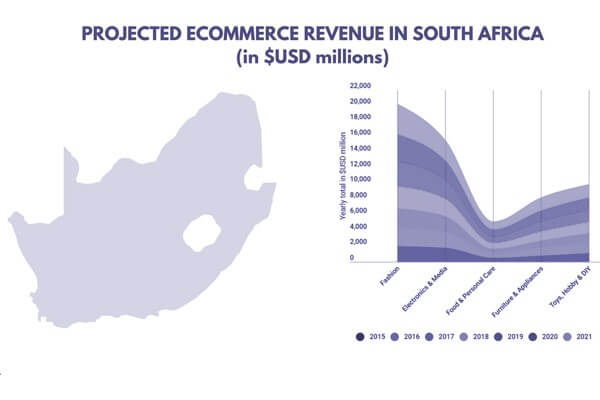
(Image Source: Statista, eCommerce South Africa)
- Mauritius top-ranked the index and has the second highest proportion of shoppers on the continent.
- Libya, ranked 13th in Africa for e-commerce readiness, having the highest proportion of online shoppers on the continent among people aged 15 and older.
- Nigeria, South Africa and Kenya estimated for nearly half of Africa’s estimated 21 million online shoppers.
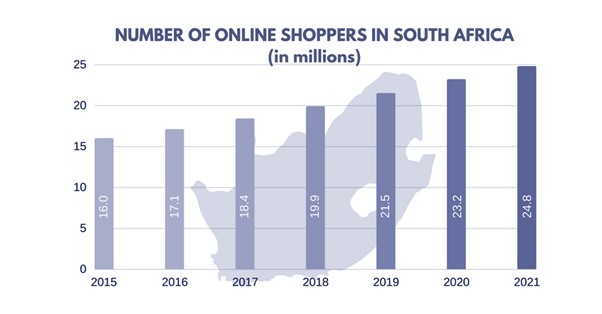
(Image Source: Statista, eCommerce South Africa, User in millions)
Since 2014, overall, the number of online shoppers across the continent has grown around 18% which is higher than the global average. Africa’s consumer e-commerce market valued at $5.7 billion in 2017 is less than 0.5% of the continent’s GDP, far below the global average of 4%.
eCommerce Craze in Countries
In Nigeria, with a population of 195 million people, has the most ecommerce sites and 40% of Africa’s ecommerce ventures have headquarters in Nigeria. It has an internet penetration of 70% and 26% of the population were recorded to have bought something online via phone in the past month as of 3rd quarter 2017.
South Africa on the other hand with a population of 57.4 million and 65% internet penetration, recorded 18% of mobile shoppers in the past month as of 3rd quarter 2017. South Africans are found to spend mostly in the fast food category of online shopping, while groceries are still purchased in-store than online.
Kenya with a population of 51 million and an impressive 82.6% internet penetration is home to M-Pesa, the mobile wallet provider started by mobile telecom provider Safaricom. More than 45% of Kenyan adults use M-Pesa according to Emergent Payments. 85% of Kenyans have adopted electronic means of payment, including bank accounts, mobile phone prepaid cards or other payment products. You won’t believe, about 75.5 % of mobile shoppers were recorded in the past month as of 3rd quarter 2017 in Kenya.
Ghana, having a population of 29.46 million and internet penetration of 45%, has taken eCommerce so seriously that it has a website dedicated specifically to ecommerce for SMEs.
Growth of Local eCommerce Platforms
Although Amazon, the eCommerce giant, showed no interest in the African market, a lot of local eCommerce platforms have emerged in the past few years to such extent that about 90% of investment is going those eCommerce start-ups in five African countries. One among such that has gained the limelight is Jumia.
“Jumia” – the Amazon of Africa:
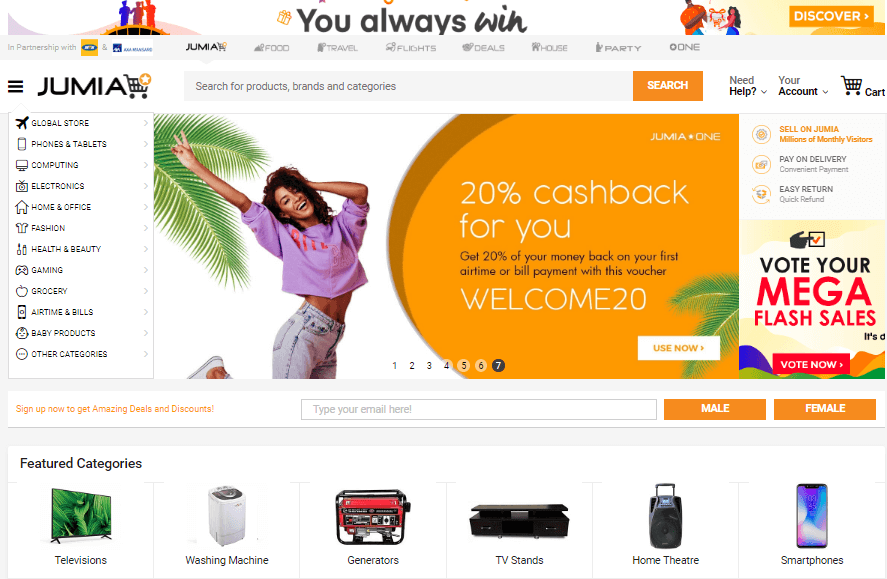
(Image Reference: https://www.jumia.com.ng/)
A Nigeria-based group, Jumia which was founded in 2012 by the Berlin-based Rocket Internet, is Africa’s best-funded ecommerce start-up with more than 3,000 employees. It operates in 14 countries in Africa and the Middle East, with each country having its own site.
Jumia has solved the logistics barrier in Africa to a great extent with more than 500 motorbikes and trucks delivering their online products to customers in the country’s eight largest cities. Jumia accepts COD, which, again, is the preferred payment method for most Africans and has raised $150 million in 2014 alone.
“Konga.com”
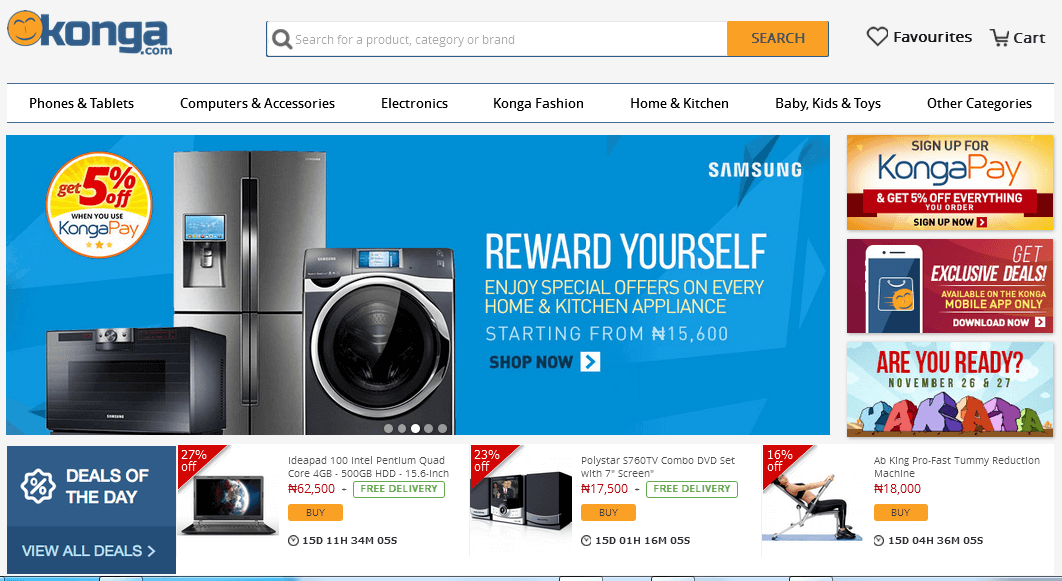
Konga.com, founded in 2012 in Nigeria that does not operate outside of Nigeria, opened Seller HQ, a third-party marketplace in 2014, now has about 1 million customers and receives over 300,000 unique visits daily. Its own logistics network — KOS Deliveries has a fleet of over 200 vehicles (vans, trucks, and motorbikes) and pick-up points and distribution centres in every part of Nigeria.
Konga even has its own payment system — KongaPay — that works with all banks in Nigeria. In 2018, Konga was acquired by a local hardware and information-technology services company, Zinox.
Success Secrets
- The African population is fast growing and urbanizing. It may reach 1.7 billion by 2030.
- Africa is witnessing an industrial revolution.
- The infrastructure gap is nearing closure. Africa’s annual investment in infrastructure has doubled to around $80 billion a year which represents a big opportunity for investors and entrepreneurs.
- New broadband connections and mobile data traffic are increasing which shows a good scope for mCommerce.
For an eCommerce marketplace to be a success in Africa is not as easy as other continents but is not impossible either. With a well-developed multi-vendor marketplace software, your strategies and market study, you can figure out excellent growth opportunities in Africa.
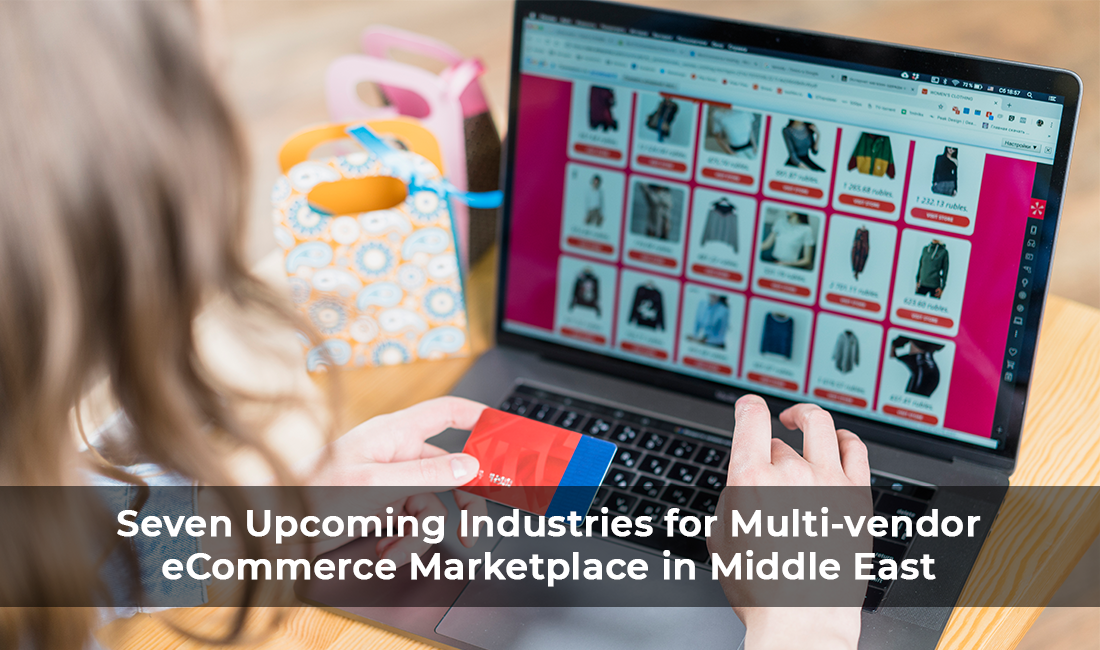
Seven Upcoming Industries for Multi-vendor eCommerce Marketplace in Middle East
The multi-vendor eCommerce marketplace landscape in the Middle East is undergoing a tremendous change. The total number of online sales in the region is expected to touch $49bn in 2021, with mobile phones becoming the most preferred source to shop online.
In the past few years, the Middle East has come in the limelight due to multiple positive developments such as younger working demographic, advanced infrastructure and high connectivity rates. Therefore, the aforementioned statistics are not surprising at all.
And, guess what? Cash on Delivery dominates the payment method for online purchases in the region. Countries like Saudi Arabia are set to become the topmost online retailer by 2020 in the B2C eCommerce market by surpassing the current trendsetter – UAE.
You may also like to read: Reasons Why You Should Have a Multi-Vendor App for Your Ecommerce Marketplace Like Amazon
Therefore, when we think of the multi-seller eCommerce platforms in the Middle East, there are many. And all of them belong to diverse industries which invariably shows that there is potential waiting to be tapped fully.
Adding to that, here are seven upcoming industries for multi-vendor eCommerce marketplace in the Middle East that are already receiving a fabulous response by consumers:
1) Laundry
This particular industry is thriving in the Middle East all thanks to the increasing urban population in the region. According to the UN Development Programme, 60% of the population is below the age of 30 and with textile and tourism booming in the Middle East, there is really no dearth of disposable income.
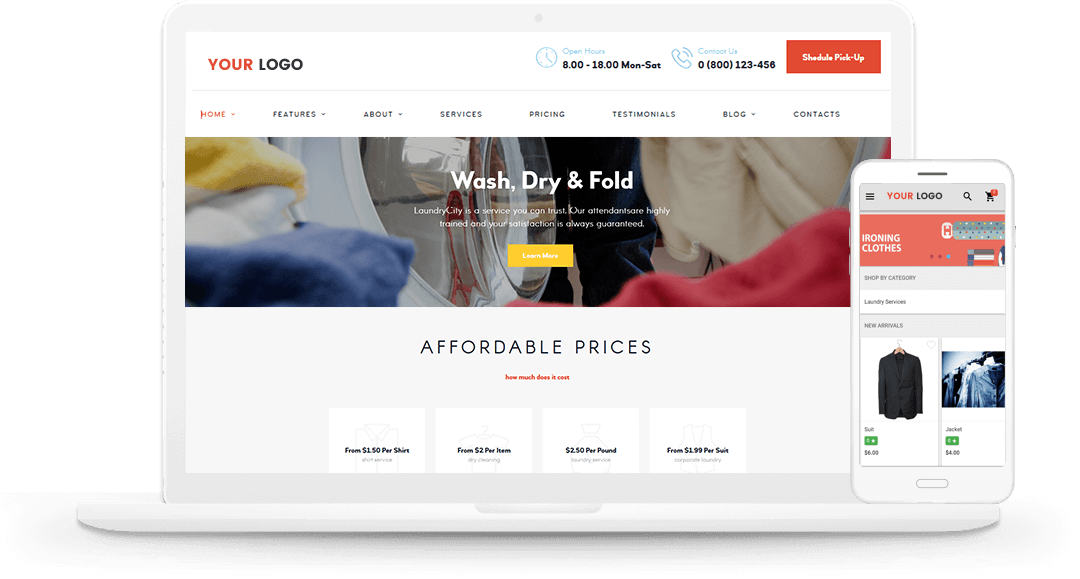
That’s why you have so many online and mobile laundry eCommerce shops like Smart Washr, Safleen, CleanLine and Ghasili that allow their customers to book their laundry through Android and iOS mobile apps. Simple!
2) Car rental and office leasing
The tourism industry in the Middle East is on a high. The region is not only witnessing an increasing number of people traveling to other parts of the world but also more and more people are traveling countries like Saudi Arabia, UAE, Egypt and Iran.
This upward trend has also led to a boost to car rental services in the region, which is expected to grow at a CAGR of more than 9% by 2025. Similarly, with so many startups seeing the light of the day, office rentals have become equally popular.
Dubai’s RentSher Middle East is the region’s first online platform for services and product renting, specifically targeting office leasing.
3) Restaurants
Any business related to food is a hard one to crack. Apparently Middle East has found the perfect way to do so.
According to a 2017 KPMG report on the Food & Beverage industry in the Middle East, 87% of food operators are listed on delivery apps with 60% of UAE customers using an app to order food compared to just 18% of US consumers. Such acceptance in F&B marketplace isn’t just restricted to home food deliveries, restaurants are also tasting the eCommerce flavor.
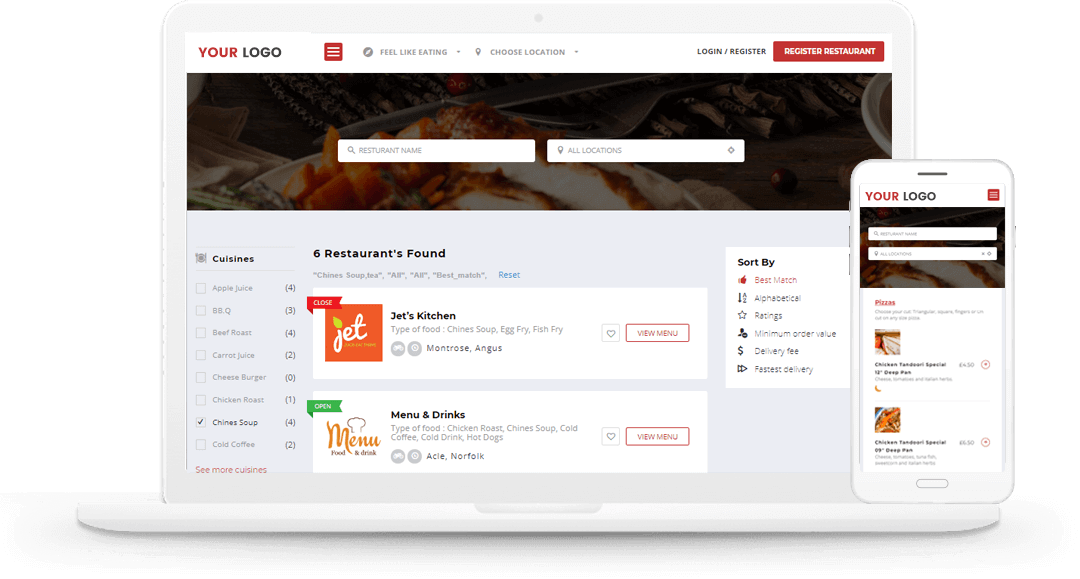
Saudi Arabia’s first online restaurant reservation portal ‘YoTable.com’ has changed the way the way people choose to eat in the region, including splitting the restaurant options according to the national cuisines for faster decisions. The online marketplace will soon expand to other cities in the Middle East.
4) Bookstores and eLearning
A recent survey by the Arab Reading Index states people in the UAE spend 50+ hours reading while an average reader in the rest of the region spends an average of 16 hours! The number of hours vary considerably. However, it doesn’t mean there is no requirement of online book shopping.
Jarir Bookstore, a thriving eCommerce business based out of Riyadh, was initially a physical retail shop selling office supplies, books and educational aids. But by looking at the increasing demand of the millennials, it expanded its services online by adjusting to the disrupting technologies and changing consumer buying patterns.
5) Health and beauty
A 2017 PwC report states health and beauty is one of the major categories when it comes to offering multi-vendor marketplace solutions in the Middle East, constituting 48% of the pie among other categories like electronics, clothing and footwear, and furniture.
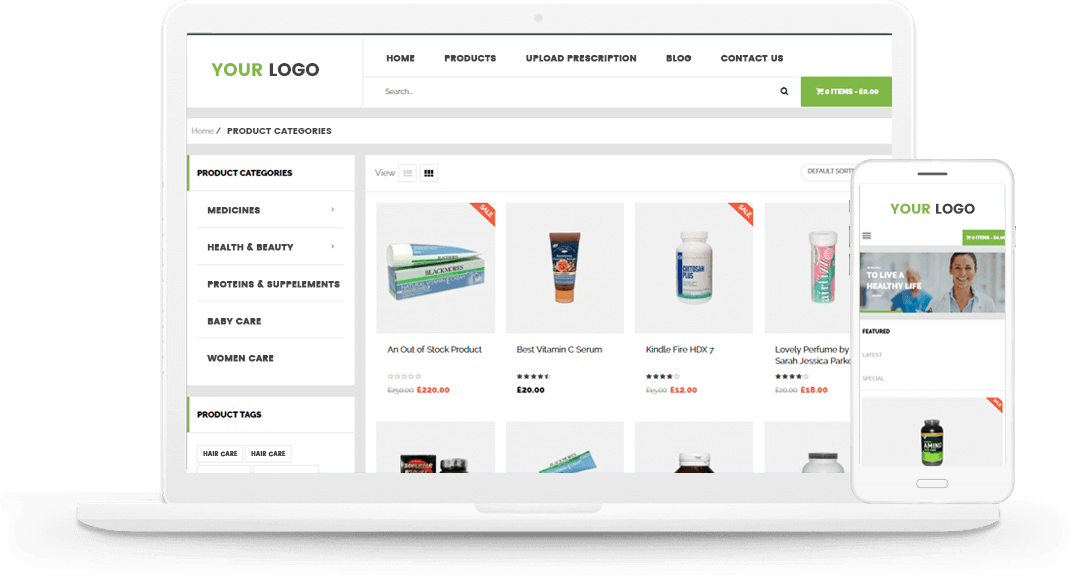
Saudi Arabia’s beauty eCommerce marketplace Golden Scent is already breaking records. It tripled its customer base in 2018 after launching its mobile app. Moreover, it raised its portfolio by 25% after branching out to the mobile medium.
6) Travel and booking
The focus on online travel and booking in the Middle East heightened only a few years ago. The reason for the positive development is the younger, tech-savvy generation that is hooked on to their smartphones and prefer using the device to make any bookings or shop!
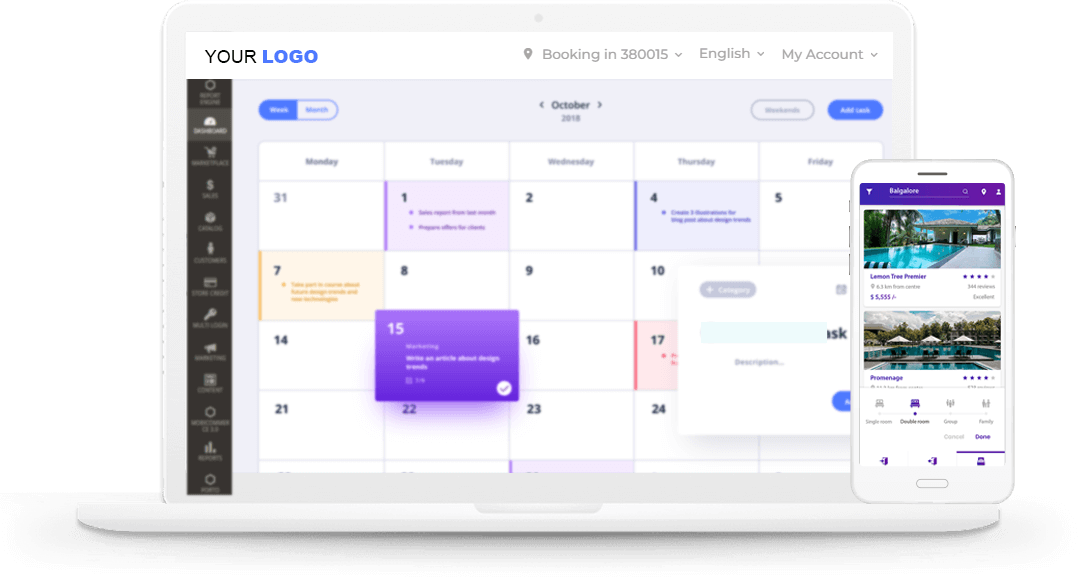
More than 50% of the UAE population relies on the internet to purchase travel-related products or to plan their holiday, with Saudi Arabia (35%) coming in second on this list. Almosafer, a Saudi online tourism platform, predicts an increase in resort-based destinations, growth around religious tourism and continued momentum throughout 2019.
7) Baby care
Tapping the potential of niche markets opens up avenues for success – no matter which country or region you belong to. And one such niche market is baby care. Do you know the aforementioned market in the Middle East and Africa was worth $1174.6mn in 2016 and is expected to reach $1605.4mn by 2025?
The reasons why the market has grown exponentially in these regions is because of increased child hygiene awareness and rise in the rate of borth in the evolving countries. Mumzworld is doing an excellent job, selling clothes, toys and food for both babies and moms online in the whole of Middle East, with an inclination towards the markets in countries Saudi Arabia and UAE.
Endnotes
If you want to be a big player in the Middle Easter eCommerce spectrum, you have to adapt to the ever-changing market trends. Pay attention to what your consumers want. Leverage technology to provide the best possible multi-vendor marketplace software solution. It’s an exciting time for eCommerce in the region, make the most of it this year and beyond!
We would love to hear your comments relating to the post. Got some other thoughts? Drop us words through our Contact US page.
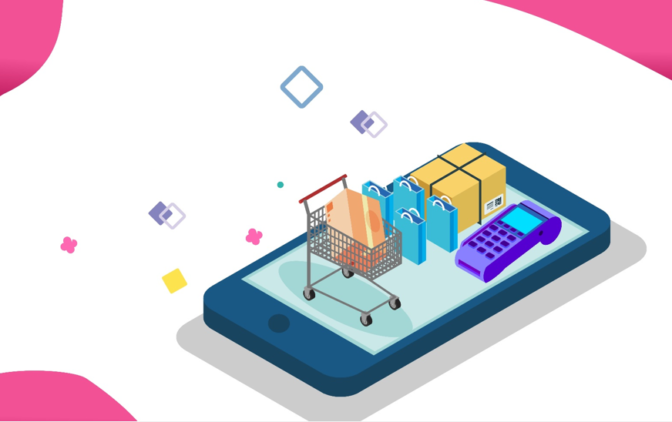
Reasons Why You Should Have a Multi-Vendor App for Your Ecommerce Marketplace Like Amazon
Did you know Amazon is on its way to become the first trillion-dollar company, with stocks doubling to $2,000? Four years ago, the eCommerce giant crossed the $100bn mark in annual revenues. Thus, the day it hits the Big T isn’t far away.
In an age where mobile is considered a more effective platform to target, engage and retain customers, do you think Amazon could have tasted success without its multi-vendor mobile app? Probably not. We have statistics to prove that:
Amazon’s multi-vendor mobile app is one of the most popular retail apps in the US, and that shows in its annual revenue reports.
Mobile and Ecommerce Go Hand-In-Hand
In the last quarter of 2017, mobile apps contributed to 44% of transactions of retailer apps in North America. Can you imagine how big mobile is in eCommerce? It is a pretty valuable part of the industry, and a platform that’s being leveraged immensely.
Mobile has made it easier for consumers to browse through the products, make a purchase and repeat the sale. So, if your eCommerce marketplace store doesn’t have a multi-vendor mobile app yet, now is the right time to get one.
Let’s understand the benefits of building a multi-vendor marketplace software online:
1) Reduce shopping cart abandonment rate
Cart abandonment is a real nuisance in eCommerce. Did you know the average rate of incomplete purchases is 69.23%? But that only accounts for desktop sites. Mobile apps have a lower cart abandonment rate (only 20%) because of a simplified checkout process.
Since a customer’s shipping address is already stored on the app, it is easier for him or her to complete the payment process with just one click. Of course – the problem arises when eCommerce stores have hidden costs like shipping or delivery expenses. If you are transparent about that, you won’t have to worry about a thing.
Therefore, having a multi-vendor mobile app for your eCommerce store increases the chances of converting customers.
2) Enjoy a higher average order value
Amazon, Alibaba.com, and Flipkart sell gadgets, kitchen appliances, cosmetics, stationery, and other items – all under the same roof. And there’s another functionality their mobile apps share. They have a convenient payment process.
As an eCommerce marketplace yourself, there’s a vast scope for you to get more vendors onboard and offer a variety of products to your customers.
But that won’t help you boost sales unless you make the last bit of the process easier. Here’s what you can do:
A. Offer different payment methods to your customers. Include Apple Pay, Google Wallet, and PayPal as options.
B. Use push notifications to attract customers to buy from you. Announce a new vendor or a sale – leverage the technology.
C. Keep a simple layout of your mobile app. Provide a one button checkout so that they can complete the transaction quickly.
Mobile apps have recorded 130% higher average order value than desktop sites. Now we understand why.
3) Customer loyalty at an all-time high
Customers who download your mobile app are in for the long haul. They are the ones who will browse through the products now and then, save a few for later and then actually make a purchase whenever they want to.
Consumers who access an eCommerce marketplace via the mobile browser have little investment in the brand. Their interest is shallow, and they may or may not come back to the store. It doesn’t matter to them.
To conclude: mobile app users are twice as likely to return to an eCommerce store in 30 days which is why it is vital for you to implement a few customer retention strategies:
A. Let your customers personalize their experience on your eCommerce store by enabling prioritized features and relevant product recommendations based on their browsing and purchase history.
B. Use mobile push notifications to educate them about special offers, abandoned carts, order status updates, and more.
C. Run special offers specifically for your mobile app users.
4) Leverage mobile phone’s inbuilt features to enhance engagement
A mobile phone has many features that can be used alongside the multi-vendor app to deliver convenient customer experience. Here are a few examples:
A. Many eCommerce marketplace stores let their customers share pictures of their purchase on the former’s social media channels via mobile apps.
B. Introduce a functionality that geotags customer addresses and eliminates the need for them to type shipping information in detail.
C. Vocalize the search process on the mobile app by enabling the use of the microphone.
These are excellent ways to drive customer engagement and drive loyalty.
5) Easy access to your eCommerce marketplace
A survey revealed 78% of consumers prefer using a mobile application to access an eCommerce store rather than using the mobile browser to do so. The statistic doesn’t surprise at all.
Customers find using a mobile app more convenient, especially when they are not thinking of making a one-off visit to your eCommerce store. They don’t need to remember the URL to access the store.
They don’t have to log in repeatedly to put products in the cart or to complete the transactions. A single click on the app icon on their mobile’s home screen will take them to where they last stopped. It’s all about convenience, and a mobile app gives that.
Wrapping up
Mobile app users view 4.6X more products than mobile website browsers. App conversion rates are 3X higher than mobile site conversion rates. The future may be mobile but the present is definitely mobile. Up your game by building a B2B multi-vendor marketplace solution today.
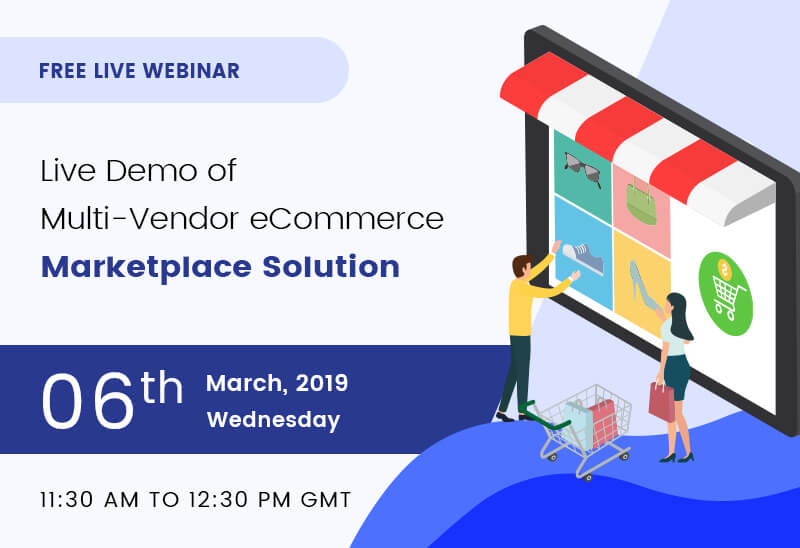
FREE WEBINAR: Live Demo of Multi-Vendor Ecommerce Marketplace Solution
According to Coresight and Juniper Research, revenues from multi-vendor marketplaces are predicted to more than double from $18.7bn in 2017 to $40.1bn in 2022.
Are you dreaming of your eCommerce Company joining the ranks of Alibaba, Amazon, and eBay?
And do you hope to boost your sales with the fastest go-to-market eCommerce marketplace solution?
If your answer is YES to both the questions, you have to check out our upcoming webinar on starting your own Magento multi-vendor eCommerce marketplace.
Before you start wondering – yes, we will give a live demo of our solution.
Key points our experts will discuss:
- All about eCommerce marketplace industries and trends
- Success stories of Multi-vendor marketplaces
- Key marketplace components: consumer storefront, super admin panel, vendor panel
- Live Demo of Magento Marketplace Solution
What are you waiting?
Don’t delay your idea to build your eCommerce marketplace on Magento because the total e-retail sales are predicted to touch around $4.9bn by 2021 worldwide!
The future is bright, and you can make yours brighter.
See you!
Presentators –
Danish Hussain
6th March 2019, Wednesday,
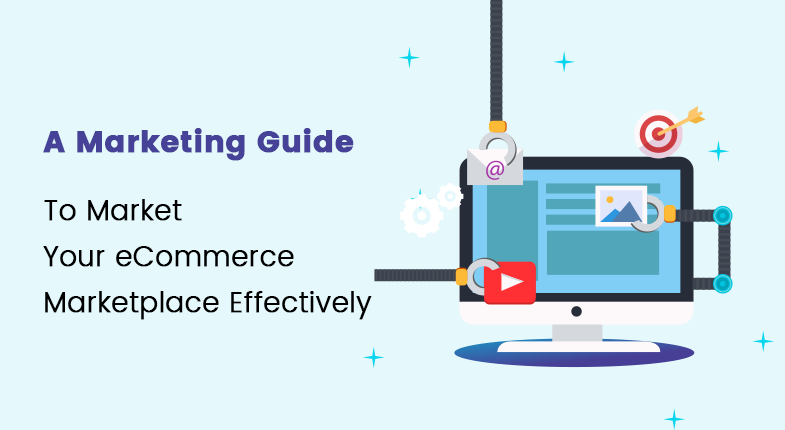
A Marketing Guide To Market Your eCommerce Marketplace Effectively
Amazon, Airbnb, and Uber are the three most famous examples of how technology has disrupted entire industries and for a good reason. They have created a new kind of marketplace in eCommerce, from supply to generating demand.
Today, we may take their success for granted. However, the road to success wasn’t easy for them. Imagine convincing consumers to stay or ride with strangers through a mobile app or to shop anything, from staple goods to niche electronic products, from just one website.
Sounds challenging indeed!
There are many types of businesses, but eCommerce marketplaces are the hardest to get off the ground. That’s because one has to acquire two types of users simultaneously – buyers and sellers. And it’s crucial for both parties to scale together for a marketplace to thrive.
As the title suggests, “A Marketing Guide to Market Your eCommerce Marketplace Effectively” specifically talks about the best marketing practices that can be applied by struggling business owners and marketers to boost promotions of their marketplace, and in turn generate more revenue.
If you are also currently in a tight spot, you might find the giveaways in the guide handy.
Have a look:
Eight promotional strategies to take advantage of
1) Create a content plan
In 2018, only 39% of content marketers documented their content marketing strategies. That number, however, jumped to 65% among top performing organizations. [CMI and MarketingProfs]

Make a list of all the platforms you plan on using to reach your potential customers. That could include blog posts, podcasts/webinars or newsletters. Keep in mind the current trends and upcoming events in a year while creating a strategy for your eCommerce marketplace.
You could set targets for each week, month and year and evaluate how the content creation and syndication process is progressing periodically.
With HubSpot and CoSchedule, you can create custom views of your marketing calendar that are interactive and can update in real-time.
Remember: content is of the essence in this age and time. So whatever marketing initiatives you plan must start with content.
2) Strengthen your SEO
72% of online marketers describe content creation as their most effective SEO tactic. [HubSpot]

Start with the basics. Optimize product listing titles and descriptions on your website with SEO keywords to increase traffic. Incorporate frequently-searched terms and phrases into the web content for better search rankings.
Tools like Ahrefs and Google Keyword Planner can be used for identifying relevant SEO keywords for your eCommerce marketplace.
Once the web content has been optimized, measure the effectiveness of your SEO strategy with Google Analytics from time-to-time, and check which keywords are the organic reason behind increased traffic and higher sales.

(Image Source – https://cdn-images-1.medium.com/max/2000/1*pVhLMfxXmHTtHPCh1_ac_Q.png)
3) Use social media organically

Source: Pew Research Center
Create a social media calendar to post regularly at times your customers are most active on. You don’t need to spread yourself thin and use all the platforms. Instead, focus only on those social networking channels that your customers use. Keep a mix of posts including industry-related trends, product offers, customer testimonials, and company news to enable a consistent social presence.
Buffer and AgoraPulse are user-friendly tools that not only automate posts but also offer a detailed analytics report for tracking the posts’ performance from one central location.
4) Run paid ads on social media
Once the organic social presence of your eCommerce marketplace has become stable, start executing paid campaigns on select social media sites. According to us, these are the most popular platforms that serve ads:
a. Facebook
93% of marketers use Facebook to run social ads on a regular basis. [Social Media Examiner]
Although Facebook’s popularity has taken a dip in recent times, it still has a unique advantage over others when it comes to advertising. You can target your ads on Facebook by age, gender, and interest – which makes it easier for advertisers to narrow down their audience for better results.

(Image Source – https://www.referralcandy.com/wp-content/uploads/2016/12/facebook-dynamic-product-ads.jpg)
Small to midsize businesses opt to run marketplace ads on Facebook as they have better click-through rates and lower cost-per-action numbers.
b. Twitter
72% of the users who follow brands on Twitter are likely to purchase items or services from them. [Simply Measured]
Similar to Facebook advertising, you can target prospective customers by gender, interest, and geography on Twitter. However, the channel has a unique cost-per-action model.
You pay only when a user follows your Promoted Account or when they favorite, retweet, reply or click on a link in your Promoted Tweet. You can decide the metric you want to measure – depending upon what you’d like to achieve from the paid campaign.
Twitter marketing might be worth a try if you are looking to spread awareness about a new service or the latest company development.
c. Instagram
Instagram stories are posted by 200+ million people on a monthly basis, making them an excellent way to reach your target audience. [Statista]
Ads on Instagram are on the rise, and you’ll find businesses, especially from eCommerce, promoting their products and services on it. From running a contest to a sponsored post – Instagram is a great way to boost brand visibility and to ensure higher sales.
Moreover, you can start with a low budget, in the beginning, to test the waters on the channel, and then gradually increase the amount.
Alternatively, you can add products to your Instagram posts and stories and include a direct link for customers to purchase from the app itself.

(Image Source – https://blog.adstage.io/2017/11/07/instagram-ad-cost-report)
Planoly, a visual planner for Instagram and Iconosquare, an analytics and management platform, can help in creating a niche strategy for your eCommerce marketplace’s Instagram.
5) Utilize PPC advertising
PPC stands for pay-per-click which means businesses pay for every click that their ad receives.
The reason PPC advertising is useful is that it enables you to measure whether or not your campaigns are cost-effective by comparing the amount of traffic and sales generated by an ad with the ad costs.
Google Adwords is the most popular PPC feature that works on the auction process. Create a set of adverts before identifying a keyword, related to your eCommerce marketplace, on which you want to bid.

(Image Source – https://searchenginewatch.com/wp-content/uploads/sites/25/2018/06/the-new-adwords-dashboard.jpg)
The ads are then chosen on bid amounts and the ad’s quality score and subsequently displayed to the target customers on their Google feed and relevant publications. PPC ads have to be improved on an on-going basis to ensure the click money is being spent wisely.
6) Leverage your email marketing
Email ranks third amongst the most influential sources of information. [WordStream] 77% of consumers would rather receive promotional content via email than through SMS or social media. [Exact Target]
Since consumers are interested to know how a product or service can benefit them, they are more likely to engage with offers or discounts that serve their needs. And what better than emails for that?
Contrary to popular belief, emails are still considered the most effective eCommerce marketing strategy for influencing consumers and convincing them to buy more.

(Image Source – Google.com)
Set an email marketing plan for every month and make sure you share a mix of content with your subscribers. That could include FAQs, service additions, product discounts, any press release or media coverage of your marketplace, and more.
A Guide to Marketing your eCommerce Marketplace Effectively
AWeber, MailChimp, ConstantContact, GetResponse, and CampaignMonitor are some of the popularly used email software in the market.
7) Collect consumer-generated content
User-generated content is great because it’s organic and honest, and it inspires customers to get involved with your business without any money or time investment from your end. It also ensures a whopping 73% higher click-through rate.
Doritos, for instance, holds a Super Bowl commercial submission contest on an annual basis which means they don’t have to pay the production crew a single penny to design a video. Moreover, the engagement levels of the Doritos fans are at an all-time high around this time, and the brand gets a commercial to air without having to break the bank!

(Image Source – http://videocontestnews.com/2010/01/05/doritos-2010-crash-the-superbowl-finalists/)
User-generated content could be in the form of reviews and ratings. You can choose to do a blog series or an Instagram story – depending upon the nature of your eCommerce marketplace – to highlight a positive review of your product or service.
8) Vendor engagement is key
Absolutely! Without vendors, your eCommerce marketplace cannot function. To enable a smooth working relationship with your vendors, make sure you onboard and train them properly on your operational processes.
At eCommerce marketplaces, vendors are rated by buyers on various parameters like on-time shipment dispatch, unresolved cases, transaction defects and more. Notify them of the poor ratings so that they are well aware of how they are performing on your site, and make necessary amends soon.
Always include the vendors in your marketing when finalizing Black Friday discounts, New Year offers or End of Season deals. They will feel appreciated and heard.
Lastly, vendors could be left unsatisfied with product returns, overdue payments, product returns or unresolved disputes. That’s why it’s best for you to keep asking for feedback continuously.
The key is always to keep them in the loop!
Five sales generation tactics to apply
1) Re-market or remind customers via push
Consumers of today are spoilt for choice and prefer to hop from one online store to another. Therefore, it isn’t surprising to search for a hack that can help you re-engage with your prospective customers.
One way to pique their interest is by sending a push notification (mobile or web) on the product they were browsing through when they were previously on the website.
If they have abandoned their shopping cart and bounced off the website (which is a high possibility), you can send them a push notification to remind them to complete the purchase.

(Image Source – http://puch%20notification/)
To make things interesting, you can even offer them a small discount or an upsell package deal to come back to the website and complete the purchase.
2) Upsell and cross-sell
When the seller encourages consumers to spend more than they had initially planned to, that type of sale is called an “upsell.” It also goes by different terms like “add-on sales” and “bundle sales.”
As of today, 81% of consumers do some sort of online research before a potential purchase. This means they want to assure themselves that when they make a purchase, they get maximum value out of their decision.
To begin with, make a list of all products your marketplace is selling and divide them into two categories – regular ones and expensive ones. Tie the more expensive product with a regular one. 4% of your customers will buy the more expensive product only because it has been positioned that way.
Similarly, cross-sell is a strategy to sell related products with something a consumer is already buying. Cross-sell products should be at least 60% cheaper than the product added to the cart. If you give your customers a complete package – for instance, a camera and batteries at a lower price – they will not think twice before buying both.
3) Make product recommendations
Product recommendations increase revenue by up to 300%, conversion rate by 150% and average order value by 50%. Forrester and Gartner
If you look up “product recommendations” on the internet, there’s one line that will pop up on your feed many times: “70% of Amazon’s homepage is dedicated to product recommendations.”
It is true. The eCommerce marketplace has pioneered the concept of recommending products to its website visitors.
If you are a first-time visitor on Amazon, you will find general recommendations such as “What Other Customers Are Looking At Right Now” or any “Best Seller.”

(Image Source – https://beeketing.com/blog/how-product-recommendation-helps-e-commerce-sites-increase-conversion-rates/)
If you revisit it, you will find personalized recommendations on the homepage that are based on your previous visits’ browsing history.
No wonder Amazon has tapped the potential of product recommendations and so should your eCommerce marketplace.
4) Build a brand community with loyalty programs
It’s a given that discounts and freebies are helpful in not only converting a customer but also nudging him or her to keep coming back for more. However, if you want your eCommerce marketplace to be profitable consistently, then it needs to build a community.
And one way to do so is via loyalty programs.
Take Amazon Prime for example. Those memberships are over 100 million in the US alone, with the eCommerce giant aggressively branching out to other countries like Mexico, China, and Canada.
Amazon Prime means multiple things: faster shipping of products bought on Amazon, access on-demand video and special product discounts. With a membership cost of $119 per year, having Prime is worth it for frequent Amazon users.
You could also start a loyalty program for your eCommerce marketplace. Through the loyalty program, your customers may be given:
- Rewards
- Free merchandise
- Discounts and rebates
- Coupons
- Access to unreleased products
Remember: It costs 5X less to retain customers than to acquire new ones and loyal customers spend up to 67% more than new customers. Therefore, work on creating lifetime customers for your eCommerce marketplace.
5) Increase checkout conversion with A/B testing
When the customers move to the check-out page, they have already conveyed that they are ready to purchase from you and no longer use the cost of the product or service as a parameter to complete the transaction.
However, many businesses lose customers due to a poor checkout experience. The reasons for the same could be many:
- Long contact forms
- Less number of payment options
- Tedious “reset password” process
- Hidden shipping costs
- Unattractive CTAs
Check out SimCity’s checkout page variations. The “Variation” page performed better by 43%.
To ensure that it doesn’t happen to your eCommerce marketplace, make multiple checkout pages to see which one customers respond to best.
Take away
There’s no secret recipe for overnight success. You need to market your business consistently and be open to making improvements along the way.
Remember:
- Always plan your marketing activities. CoSchedule and Smart Insights offer free templates for content, social media, and email marketing.
- Keep aside a set budget to run paid social ads. How you distribute that money across different networking channels depends on the real-time ad performance.
- Study analytics frequently to identify which blog post, social media ad, email or web page is performing well and what’s not. Make amends accordingly.
Questions? Speak to us!
Your eCommerce marketplace deserves all the success in the world, and it is imperative to address any queries regarding the eCommerce Software Solution you may have. The good news is we are a team of eCommerce experts always at your service. Contact us anyhow you like, and we’ll help you at the earliest.
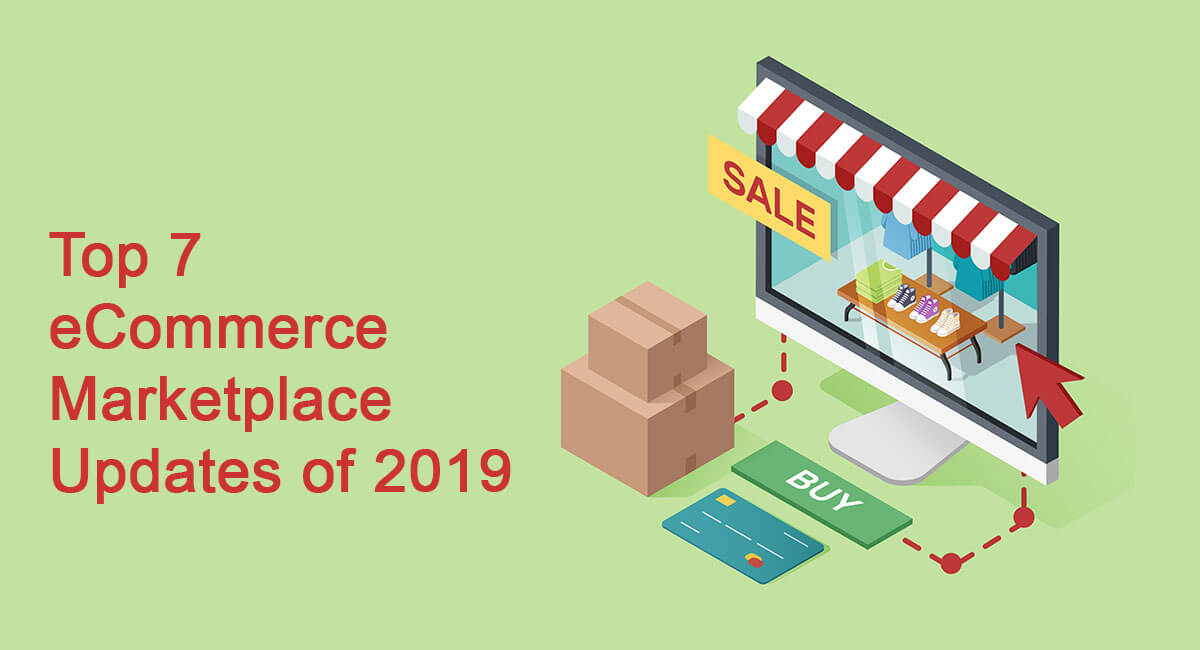
Top 7 e-Commerce Marketplace Updates of 2019
The e-commerce industry is emerging with great speed and many businesses are moving from offline to the online marketplace. The competition is rising with every passing day and to stand strong even in the crowd of thousands e-commerce venture must be dynamic in nature. Yes, if you want to be successful in the digital world one must run according to the prevailing trends and technologies. The new generation prefers easy and updated shopping experience and it is important to update yourself as per the market trends.
Recommended blog: 5 Successful eCommerce Marketplace Businesses in Saudi Arabia
Future is unpredictable but few trends that may define the e-commerce marketplace are predicted by market experts. These trends will definitely act as an important factor to make your e-commerce venture successful. The following trends predicted by market experts must be a part of your future decision and will act as an important part in planning investment strategy and overall business plan.
1. Social Media Shopping
The trend of shopping on mobile or web e-commerce website is expected to continue even in 2019. Magento multi-vendor marketplace e-commerce provides a platform for those who are willing to enter in this online industry. Updated with all the latest and useful features this software is expected to introduce some new faces in the shopping industry. Whether it is about sharing the latest tips, reviews of any newly launched product or posting your listings keep your social media accounts active as in 2019 all these details can be accessed through your phone.
2. Expensive Ads
In 2019 get ready to pay more for your online advertising. With the increasing rate of internet users advertising online is expected to experience a price hike. Gone are those days when you can reach worldwide in an expensive way. This trend may be trouble for some but market experts have predicted a tremendous hike in advertising rate in the digital industry.
There are several strategies which you can apply to overcome this trend and reach your target audience:
- Adjust your financial budget according to the ad space.
- Start blogging as it is an easy and cost-efficient way to reach a wider audience.
- Use a multi-channel approach to ensure that you have maximum visibility as compared to others
3. Increased Personalized shopping
The trend of personalized shopping is at its peak. Yes, millennial are now craving for traditional personalized shopping style rather than going for unengaging and impersonal shopping sites. To cope up with this trend multi-vendor marketplace software of Magento helps you to offer your customers an incredible shopping experience. In 2019, as per predictions of market experts e-commerce have to provide personalized offers, discounts and services to impress their customers. Customers are looking for a unique way of shopping so, if you have your own e-commerce marketplace or selling on any other platform make efforts to leave a long-lasting impression on your customers by adding a customized shopping experience strategy in your future plans.
4. International e-commerce
Get ready to face real competition. With the rising trend of e-commerce market experts are expecting to see more international sellers, buyers and products in 2019. This market update will definitely give you an opportunity to reach to a wider audience but in return, the competition with the international seller may force you to make stronger and costly marketing strategies. With the constant expansion of e-commerce marketplace, the reach of your e-commerce venture will not be bounded to any boundaries.
Recommended blog: Event or Show Booking Marketplace are Growing in South East Asia
5. B2B market
In 2019 we will experience a tremendous rise in the growth rate of the B2B industry. If you have your b2b multi-vendor e-commerce system then start working on its expansion as in 2019 your business model is going to engage in more B2B transactions. The boon period of B2B market is expected to arrive in 2019. You may not be aware of the strength of your B2B multivendor e-commerce site but in coming future, this industry will contribute a great amount of revenue worldwide.

6. Personalized recommendation:
Online business uses many marketing strategies to impress their customers but not all strategies work in favor of e-commerce ventures but according to the market experts in 2019 no marketing strategy can beat the result of providing an unforgettable shopping experience to your customer. The future is all about giving comfortable and excellent shopping experience and if you fail to do so then no marketing strategy can rescue you. Customers will prefer community based recommendations whether it’s an online group or next door neighbours nothing can beat the power of personalized recommendation so make sure that you provide high-quality customer services and products to leave a long lasting impression on your customers.
7. Emerging industry
Start planning to expand your e-commerce venture as the industry is expected to continue growing in the future with great pace. In the US it is predicted that by 2022 e-commerce market will make revenue of over $138 billion. You can use Magento multivendor marketplace extension online for expanding your e-commerce venture and to customize it to keep up with the trends of 2019.
Conclusion
It is very important to alter your e-commerce venture as per the market trends. To stay successfully for the long term in the e-commerce marketplace it is mandatory to give a constant attention to the market trends. In 2019, the only way to run your e-commerce market successfully is to keep up with the trends. A successful business whether online or offline must make changes as per the changing trends.
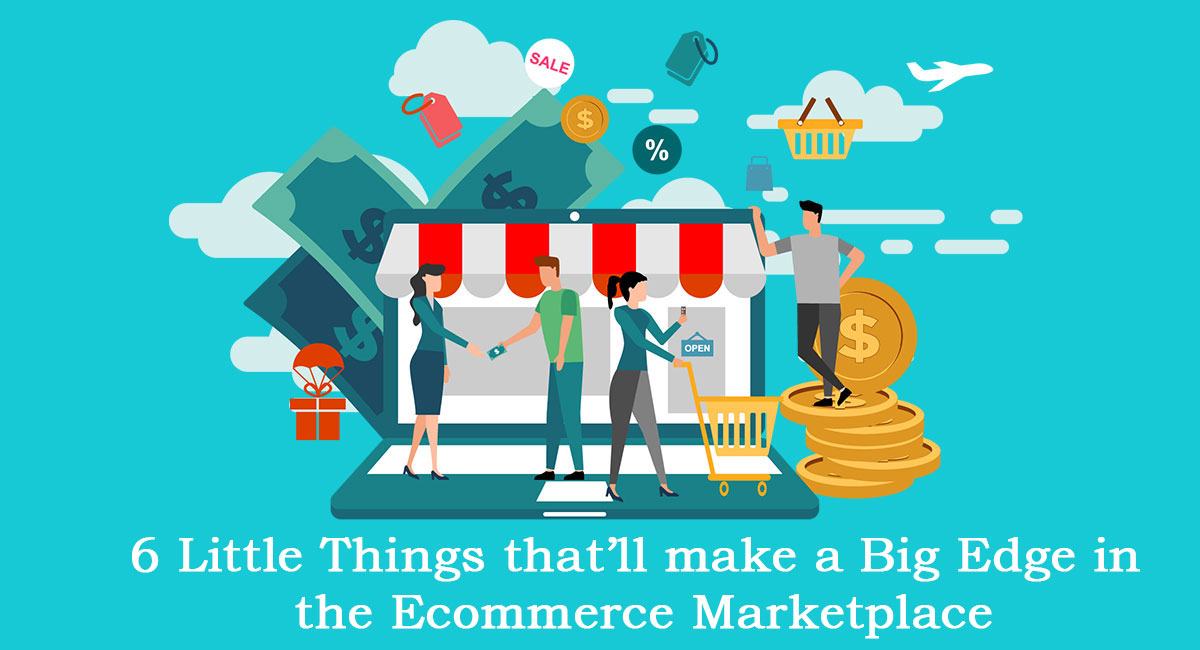
6 Little things that’ll make a Big Edge in the Ecommerce Marketplace
Every entrepreneur gives all his effort to make his e-commerce portal a successful venture. Using innovative methods and to synchronise the necessary steps at a correct time is the basic thing that may guarantee you a success. E-commerce is the most competitive industry nowadays and to shine in the crowd of thousands to attract your target audience is the biggest achievement of any business. Magento marketplace software solutions though help you to get an impressive e-commerce platform but few steps are supposed to be taken by an entrepreneur to leave an imprint on the industry.
Every business has its own limitations and no set of rules may ensure you a success but following a few little things may definitely help you make a Big Edge in the E-commerce Marketplace:
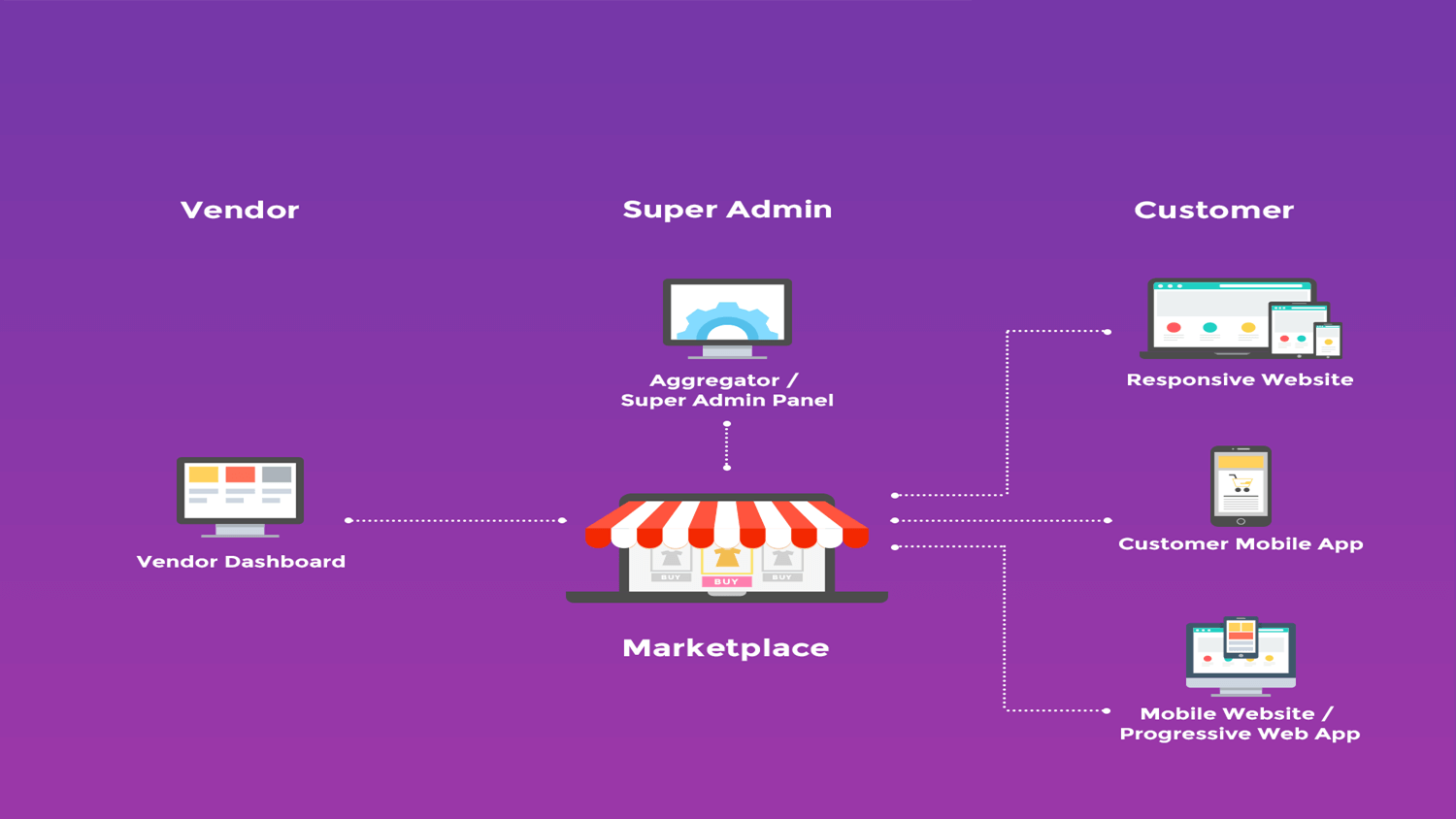
Recommended blog: 5 Successful eCommerce Marketplace Businesses in Saudi Arabia
1. Personalized experience:
This step will emerge as the biggest key to impress your customers. Giving your customers a personalized shopping experience may not only increase your sales but will build a trust. An Entrepreneur can collect vital information regarding their preference, taste and needs and serve them accordingly. To create this experience you can offer personalized recommendations, special discounts on anniversaries, birthday and one-to-one interaction to review your product and other customer support. Utilize the information collected from the survey efficiently and determine the customer’s behavioural pattern. With these steps, you can connect with the customers directly.
2. Influential Relationship:
An association with influential personalities may act as an effective promotion strategy for your brand. Many e-commerce start-ups make mistake by using investors or media to promote their ideas or products as this may not generate an expected result. Using an influential personality or collaboration with influential personalities may help you steal the attention of target customers instantly. Bringing a focus on your product by valued testimonials, introduction to powerful personalities or mention in popular magazines is easy and have a long-lasting impact on the audience. These efforts will definitely generate effective results
3. Fresh Content:
The biggest myth of the e-commerce industry is that this business is all about products, offers and discounts. They may be an important part of the business but not the only way to ensure your success. There is more to be done to attract your audience and increase your margin sales. A set of informative content can be as engaging for the e-Commerce sites as for the other websites. An original content can help businesses to grab viewers’ attention. The original reviews or feedbacks on products and after-sales service can help customers make sorted decisions. The content plays a vital role in shaping the viewer’s opinion and helps them in making choice without any doubt.
4.Utilize a Mobile’s Potential:
In this digital era, one cannot ignore the power of mobile phones. Mobiles are an easy and convenient way to reach the wide audience in no time. According to market experts, m-commerce will contribute a massive share of 53.9% of all e-commerce by 2021. Hence, it is advised to upgrade your e-commerce venture by using Magento multivendor marketplace extension online and make your venture a mobile-friendly site. The e-Commerce apps will help you offer a personalized experience to your buyers. Even adding many customizable features will help buyers feel closer to your e-Commerce site and will make your site more attractive.
Recommended blog: Event or Show Booking Marketplace are Growing in South East Asia
5. Introduce Voice Shopping:
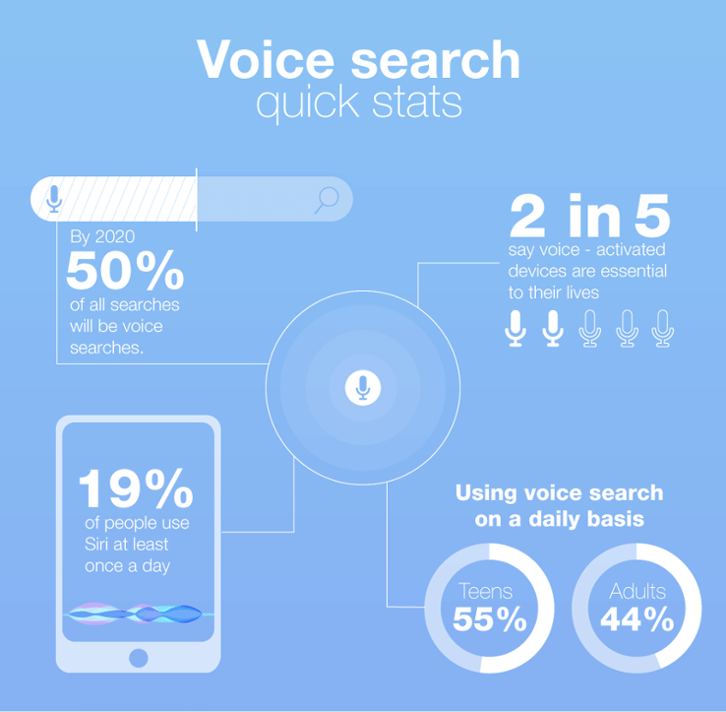
Voice shopping may be new to this industry but is shaping the future of e-commerce industry. There are many voice assistants software available in the market that is contributing well to the increasing popularity of ‘voice shopping’. The entrepreneur may use this feature to increase sales and add a personalized touch to their shopping experience. Using native language and adding few local words to the product description may help them feel connected to the product. This trend is sure to bring revolution in the future o e-commerce market. Use this feature to build a personal connection with your customer and offer a higher sense of comfort.
6. Augmented Reality:
The augmented reality (AR) is proving itself a very useful tool in our everyday life. Augmented reality is the result of using technology to superimpose the information sounds, images and text on the world we see. They do not replace reality they add to the reality. Implementing this latest technology may enhance the shopping experience of your customers. Latest technologies have always been a centre of attraction for the audience and using these latest trends in your website will definitely boost traffic to your site. The use of AR will surely ensure a convenient and personalized way of shopping.
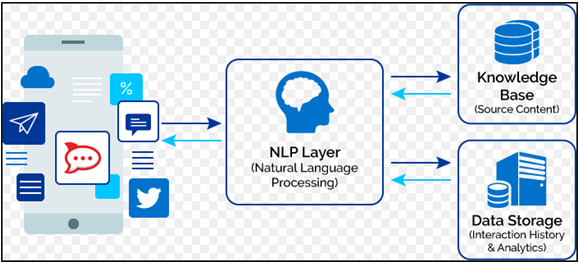
Conclusion:
The key to the success of any entrepreneur is to stay up-to-date with the latest trends and technology of the market. The new generation of buyers believes in using the latest technology and easy shopping. It is a highly challenging task to bring success to your e-commerce venture but not an impossible one Magento multivendor e-commerce marketplace solution makes it easy for an entrepreneur to keep your e-commerce venture updated. Following these basic tricks and tips will steer an e-Commerce business in the right direction and may guarantee its success.
